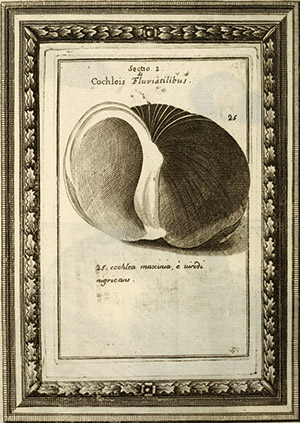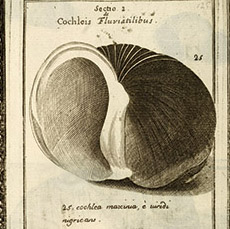
Throughout the long history of scientific investigation, knowledge was formulated, shared, legitimated, and disseminated in manuscript and printed text, as well as in paintings, drawings, and engravings. These material factors —the conditions of writing, printing, and image making —underwrite the exchange and dissemination of scientific knowledge from classical antiquity to the nineteenth century. This cross-disciplinary symposium will investigate the myriad, often contradictory, vocabularies we use to analyze images and text in scientific writing. Its goal is to promote more fruitful interdisciplinary, collaborative work in the history of scientific thought.
This symposium is generously sponsored by the Kislak Center for Special Collections, Rare Books and Manuscripts at the University of Pennsylvania; the Penn Humanities Forum; and Rare Book School, University of Virginia, with funding from the Gladys Krieble Delmas Foundation and the Mellon Foundation, through The Andrew W. Mellon Fellowship of Scholars in Critical Bibliography.
Organizers
Meghan Doherty, Director, Doris Ulmann Galleries; Curator, College Art Collections; and Assistant Professor of Art History, Berea College
Lynne Farrington, Senior Curator, Special Collections, Kislak Center for Special Collections, Rare Books and Manuscripts, University of Pennsylvania
Jeannie Kenmotsu, PhD candidate, History of Art, University of Pennsylvania; Bishop White Postdoctoral Fellow of Japanese Art and Culture, Royal Ontario Museum
Megan C. McNamee, A. W. Mellon Postdoctoral Fellow, Center for Advanced Study in the Visual Arts (CASVA), Washington, DC
Dahlia Porter, Assistant Professor, Department of English, University of North Texas
Courtney Ann Roby, Assistant Professor, Department of Classics, Cornell University

Benjamin Anderson is Assistant Professor of History of Art and Visual Studies, Cornell University. He studies the visual and material cultures of the eastern Mediterranean, with a focus on late antiquity and Byzantium. A monograph, Cosmos and Community in Early Medieval Art, is forthcoming from Yale University Press in 2017.
Florence Hsia is Professor in the Department of History of Science at the University of Wisconsin-Madison. Her interests include early modern Jesuit science, the history of Chinese science, the history of print culture, and data practices in astronomy. She is the author of Sojourners in a Strange Land: Jesuits and Their Scientific Missions in Late Imperial China, and is currently writing a history of the sinological sciences.
Kathleen Garland is a second year Ph.D. candidate in Classics at Cornell University concentrating in archaeology and art history. She focuses on the role material culture played in shaping the political and religious ideologies of the eastern Mediterranean world during the Roman imperial period. She is also interested in the mechanisms of the transmission of information, and the materiality of the book in connection with the reception of Classical literature. She has participated in excavations in Greece, Israel, and Italy, and spent a year working at the Kislak Center for Special Collections, Rare Books and Manuscripts.
Sachiko Kusukawa is Professor and Fellow in History and Philosophy of Science, Trinity College, Cambridge. She has broad interest in the history of science, cultural and intellectual history, and the history of the book, and has published on Protestant natural philosophy, university textbooks and libraries, and visual arguments in illustrated scientific books. She is the author of Picturing the Book of Nature (Chicago, 2012), which treats observational, descriptive and pictorial practices in the development and production of scientific knowledge in the early modern period (1500-1720). She was a co-investigator in the AHRC-funded research project on "Diagrams, figures and the transformation of astronomy 1450-1650," and Principal Investigator of an international network, "Origins of Science as a Visual Pursuit: The Case of the Early Royal Society"also funded by the AHRC. She is currently directing a research project on the pictorial practices of the early Royal Society through CRASSH.
Reviel Netz studied at Tel Aviv and Cambridge, and is Professor of Classics at Stanford University. He is a scholar of ancient science, with special emphasis on the history of cognitive practices, such as those of the ancient book. He is the author of The Shaping of Deduction in Greek Mathematics: a Study in Cognitive History (1999, Runciman Award), The Transformation of Early Mediterranean Mathematics: From Problems to Equations (2004), and Ludic Proof: Greek Mathematics and the Alexandrian Aesthetic (2009). He has been active in the Archimedes Palimpsest project, transcribing, together with Nigel Wilson, the Archimedes text.34
Elizabeth Savage (Upper) is British Academy Postdoctoral Fellow, Centre for Material Text, Faculty of English, and Research Fellow, Department of History of Art. Her research explores how the earliest printing techniques shaped visual communication in the fifteenth and sixteenth centuries, including book illustrations, single-sheet prints and prints in the decorative arts. Since taking her PhD (Cambridge, 2013), her research has been recognised with the Wolfgang Ratjen-Preis and awards from the Bibliographical Society of America and the American Printing History Association. Her recent curation includes exhibitions at the British Museum and Cambridge University Library, and her publications include Printing Colour 1400‐1700: Histories, Techniques, Functions and Receptions (2015). She previously held the Munby Fellowship in Bibliography, Cambridge University, and fellowships at institutions including the Herzog August Bibliothek and Warburg Institute.
Dan Selcer is an Associate Professor and Director of Graduate Studies in the Philosophy Department at Duquesne University, where his work focuses on early modern philosophical concepts of materiality, the history of early modern science, and intersections between philosophy and print culture. He is the author of Philosophy and the Book: Early Modern Figures of Material Inscription (Continuum) and has published in Intellectual History Review, Representations, Continental Philosophy Review, and other journals.
Kristel Smentek is Associate Professor of Art History in the Department of Architecture at MIT. Her research focuses on early modern European collecting and the art market, rococo art and design, and the impact of Asian-European exchange on eighteenth-century European art and aesthetic theory. She is the author of Mariette and the Science of the Connoisseur in Eighteenth-Century Europe (2014) and Rococo Exotic: French Mounted Porcelain and the Allure of the East (2007), as well as articles on the European print trade, reproductive print technologies, and the eighteenth-century French reception of Asian art. She is currently working on a new book on Sino-French artistic exchange entitled, Objects of Encounter: China in Eighteenth-Century France.
Juliet Sperling is a doctoral candidate in the Department of the History of Art at the University of Pennsylvania. She is broadly interested in American art and visual culture from the late eighteenth to the early twentieth century, with particular emphasis on the history of moving images before cinema. Her current project, "Animating Flatness: Moving Images in American Art, 1780-1895," examines movable books and metamorphic prints as visual contexts for the creation and viewing of artworks by Raphaelle Peale, Hiram Powers, David Claypoole Johnston, and Winslow Homer. For the 2016-2017 year, Juliet is a Luce/ACLS Dissertation Fellow in American Art.
September 30, 2016
5:00-6:30pm Keynote Lecture
Sachiko Kusukawa
"Copying as Translation: Direct Observation vs. Copied Scientific Illustrations"
Watch Keynote
October 1, 2016
9:00-9:45am Registration and Coffee
9:45-10:00am Opening Remarks
Lynne Farrington and Dahlia Porter
10:00-11:15am Session 1: Methodologies
Moderator: Meghan Doherty
Elizabeth Savage, "The Language of Scientific Illustrations: Cross-Disciplinary Cataloguing Conundrums"
Reviel Netz, "Scale and Speculation: How many Ancient Books? How Many Ancient Authors?"
Watch presentation by Reviel Netz
11:15-11:45am Break
11:45am-1:00pm Session 2: Figuring and Picturing
Moderator: Jeannie Kenmotsu
Kristel Smentek, "Picturing Chinese Knowledge in Eighteenth-Century France: Henri-Léonard Bertin's Mémoires concernant des Chinois (1776-1791)."
Kathleen Garland, "Figuring Pliny: The uses of illustration in a 1582 edition of the Natural History"
1:00-2:30pm Lunch
2:30-3:45pm Session 3: Text and Table
Moderator: Megan McNamee
Juliet Sperling, "What to Expect: the Possibilities of Touch in Spratt's Obstetric Tables"
Florence Hsia, "Table Talk"
3:45-4:15pm Break
4:15-5:30pm Session 4: Everything and Nothing
Moderator: Courtney Roby
Benjamin Anderson, "Cosmogony: The Beholder's Share"
Dan Selcer, "Picturing Nothing: Early Modern Images of Absence"
5:30-6:00pm Closing Discussion
Moderators: Roger Gaskell and Dahlia Porter
6:00-7:00pm Reception